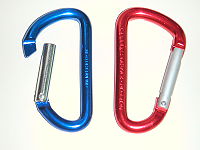
Photo from wikipedia
Abstract This paper investigates numerically the two-dimensional diffusion-reaction behavior of sulphate ions in cement-based materials in accordance with Fick’s second law of diffusion and reaction kinetics, and the tensile constitutive… Click to show full abstract
Abstract This paper investigates numerically the two-dimensional diffusion-reaction behavior of sulphate ions in cement-based materials in accordance with Fick’s second law of diffusion and reaction kinetics, and the tensile constitutive law, on account of ettringite formation. Further, a durability-based limit state function and a predictive model are proposed to forecast the crack growth in structures made with cementitious materials exposed to adverse sulphate environment. The results show that the amount of calcium aluminates in the binder and the initial diffusion coefficient are most influential in resisting external sulphate attack. Whereas, the initial porosity has minor significance, the sulphate concentration in the surrounding environment is inconsequential. Stochastic analysis confirms that sulphate-resisting Portland cement accords high reliability even after lengthy exposure, whereas an ordinary Portland cement or that blended with fly ash present a risk of failure in due course.
Journal Title: Construction and Building Materials
Year Published: 2019
Link to full text (if available)
Share on Social Media: Sign Up to like & get
recommendations!